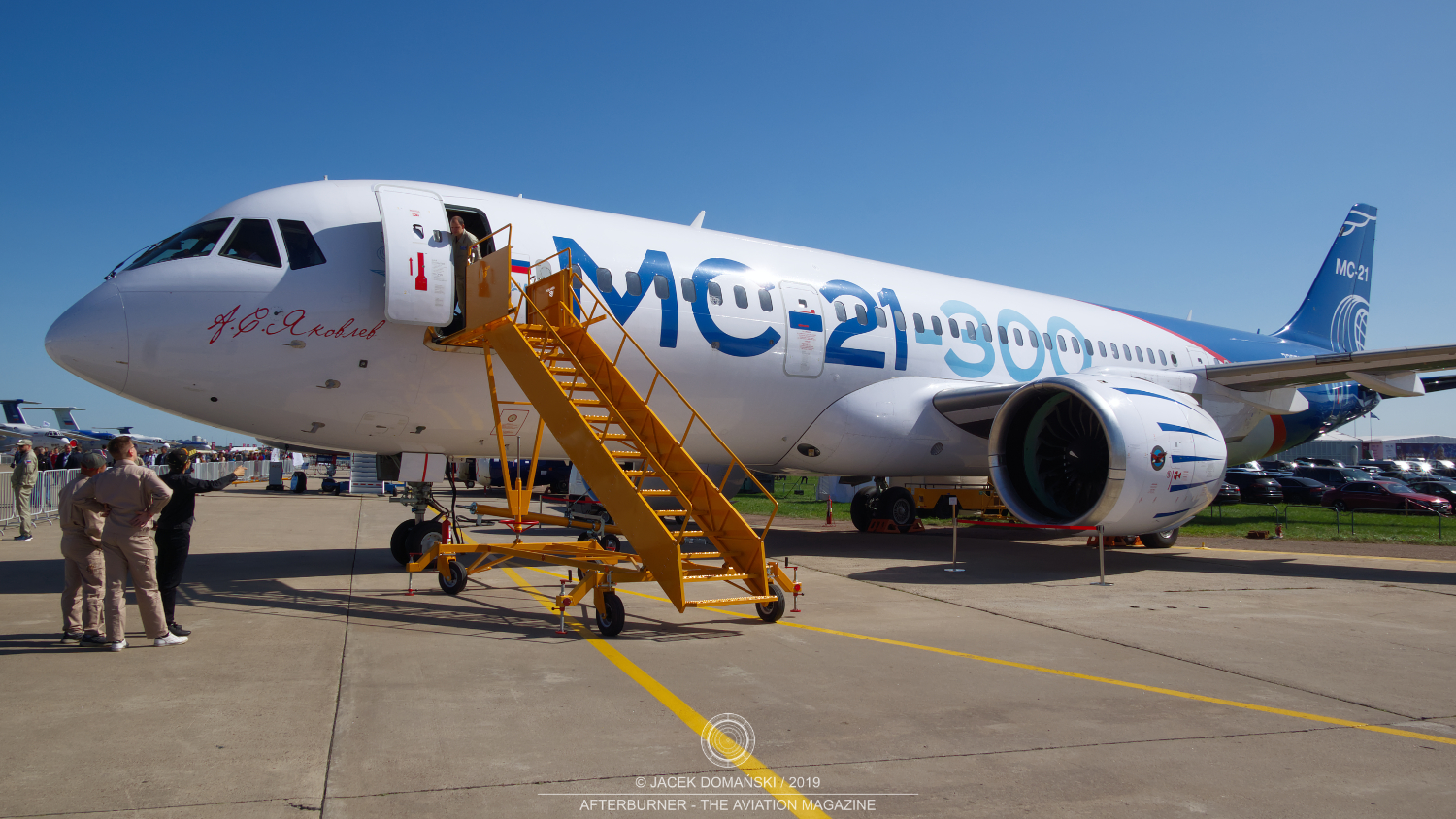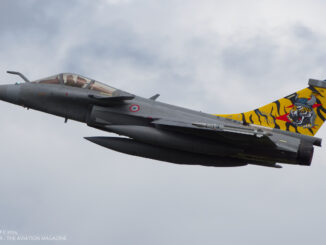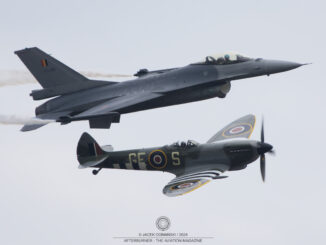 In January of 2024, Sergei Alexandrovsky, the CEO of Aeroflot, the biggest Russian air carrier, announced that the company was going to buy 339 new airliners by 2030. The purchasing plan included 89 Sukhoi Superjets (SJ-100), 210 MC-21s and 40 Tu-214 aeroplanes, aimed to replace the current fleet of Airbus A320 and Boeing 737 jets.
In January of 2024, Sergei Alexandrovsky, the CEO of Aeroflot, the biggest Russian air carrier, announced that the company was going to buy 339 new airliners by 2030. The purchasing plan included 89 Sukhoi Superjets (SJ-100), 210 MC-21s and 40 Tu-214 aeroplanes, aimed to replace the current fleet of Airbus A320 and Boeing 737 jets.
Aeroflot´s intended procurement of the new aircraft followed the main forecast of the government´s programme known as KPGA (Комплексная программа развития авиатранспортной отрасли –Comprehensive programme for development of the aviation industry), aimed for manufacturing more than one thousand airliners until the end of the 2020s. According to that forecast, as much as thirty-four SJ-100s, eighteen MC-21s and eleven Tu-214s should be taken over by the company until the end of 2025.
However, it has only been a few months and Aeroflot already revised the company´s future orders, fully focusing on the MC-21 only.
Already in June of 2024, Alexandrovsky announced that the company is no longer interested in acquiring any other airliner than the MC-21. Shortly after, the national Russian carrier successfully pressed on OJSC United Aircraft Corporation (UAC), the sole Russian aircraft manufacturer incorporating all the aviation companies in the country, to launch development works on shorter variant of the airliner, designated MC-21-200 and intended to replace the SJ-100.
The MC-21 passenger aeroplane, nicknamed ´the airliner for the 21st century´ and for which the Russian aviation industry has high hopes for competing with Airbus and Boeing jets, currently undergoes the complicated process of ´russification´. However, the development suffers from many significant issues resulting in continuous postponement of the MC-21 delivery dates (more information on current development of the Russian passenger aircraft can be found in our article from April of 2024 – Modern Russian airliners – where the mistake was made?).

Initially, and apart from the main version designated MC-21-300, the project included also shorter and longer variants of the aeroplane, known as the MC-21-200 and MC-21-400, respectively. However, their development was frozen due to the aforementioned troubles with the leading model. Now, Aeroflot´s intention to buy at least one hundred of the MC-21-200 caused the development of the shorter variant gained a new momentum.
The MC-21-200 is approximately eight meters shorter than the standard version of the airliner. The aircraft can carry 136-165 passengers, depending on seat configuration. UAC expects that development works on the aeroplane should be completed by 2030.
At the beginning of September, after a further discussion with representatives of the Russian aviation industry, Aeroflot eventually agreed to acquire thirty-four examples of the SJ-100 already ordered and prepared for production. However, during the Eastern Economic Forum 2024, held between 3rd and 6th September in Vladivostok, Alexandrovsky stated neither Aeroflot nor its subsidiaries are going to operate them. The SJ-100s will be taken over by Aeroflot but only to be leased for other domestic aviation companies.
Currently, Aeroflot is the biggest operator of the Sukhoi Superjet SSJ-100, the predecessor of SJ-100, made with use of Western components. All the aircraft were assigned to the company´s subsidiary, Rossiya Airlines. According to unofficial information, at least one of its SSJ-100s was already fully cannibalised as source of spare parts.
In the meantime, the development of импортозамещенный (import-substituted, an official Russian term for aircraft made without any Western components) SJ-100 was marked with another delay. Initially, maiden flight of the ´russificated´ jet, powered by PD-8 engines, was scheduled for spring of 2024. Then, it was postponed for autumn but just a few weeks ago it was announced the first flight would take place in the first half of 2025.

Currently, the manufacturer completed three prototypes of the SJ-100. The first is still powered by PowerJet SaM146 engines, two others are already equipped with the PD-8 and are undergoing ground engine tests. However, only the last one of the three prototypes was made with use of only domestic components and materials.
Moreover, according to the Russian authorities, the aeroplane needs to complete approximately 200 flights to receive national certificate and allowance for serial production. Therefore, it seems rather impossible to start with the SJ-100 deliveries next year.
Nevertheless, the Aeroflot´s decision to focus on the MC-21 only made it difficult for another Russian carrier, АО Авиакомпания “Сибирь” (JSC Siberia Airlines, commonly known as S7 Airlines). The airline already complained about forecasted delivery dates of the MC-21 airliners. Now, with the increased number of jets ordered by Aeroflot and its former subsidiary АО Авиакомпания «Аврора» (Aurora Airlines), the situation turned even worse.
Therefore, it was not surprising that S7 used the opportunity to take over the Tu-214 aircraft rejected by Aeroflot. On 18th September the company signed a memorandum with UAC to acquire one hundred of Tu-214 airliners. Delivery date of the first ten aircraft will be agreed until the end of 2024. Then, S7 and UAC should agree on exact configuration and delivery schedule for remaining ninety jets.
If the aforementioned purchase gets fully executed, the Tu-214 would replace all the Western-made aircraft in the S7 fleet. Currently, the company operates approximately ninety airliners, including Airbus A319, A320, A321 and Boeing 737. Back in 2018, the airline expressed its interest in acquiring twenty-five Superjets, with option for another fifty examples. However, the plan to purchase Sukhoi airliners was finally abandoned in 2019.

According to UAC, the change of Aeroflot purchasing plan did not have a negative impact on the manufacturer. What´s more, it allowed to optimise the SJ-100 production schedule and shorten the delivery times.
The company stated it already received orders for 229 examples of the SJ-100, which is exceeding the UAC production capacity. Due to that, only 142 airliners of that type are planned to be completed by 2030 and another fifty examples within next two years.
During the aforementioned Eastern Economic Forum 2024, UAC also signed memorandum on delivery of 246 new aircraft with Государственная транспортная лизинговая компания (State Transport Leasing Company – GLTK), including 132 examples of the SJ-100, 65 Il-114-300 and 41 Tu-214, with deliveries scheduled between 2027 and 2032.
The memorandum signed by GLTK, together with the aforementioned orders from Aeroflot, S7 and other domestic air carriers, makes the total number of new passenger aircraft to enter the Russian market by 2023 not to exceed 650 examples, under a very optimistic scenario.
And this is much less than 1,081 new airliners until 2030 (and 1.8 thousand by 2040), as forecasted in KPGA (more information about an audit on Russian governmental plans related to aviation industry in our article – Audit raises concerns on the Russian plans to build one thousand airliners).




